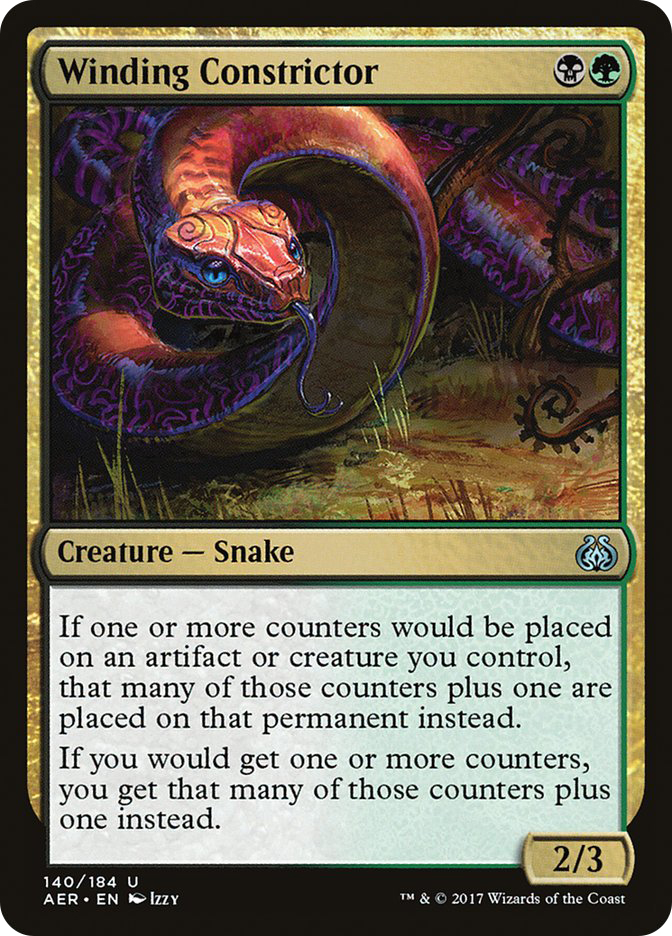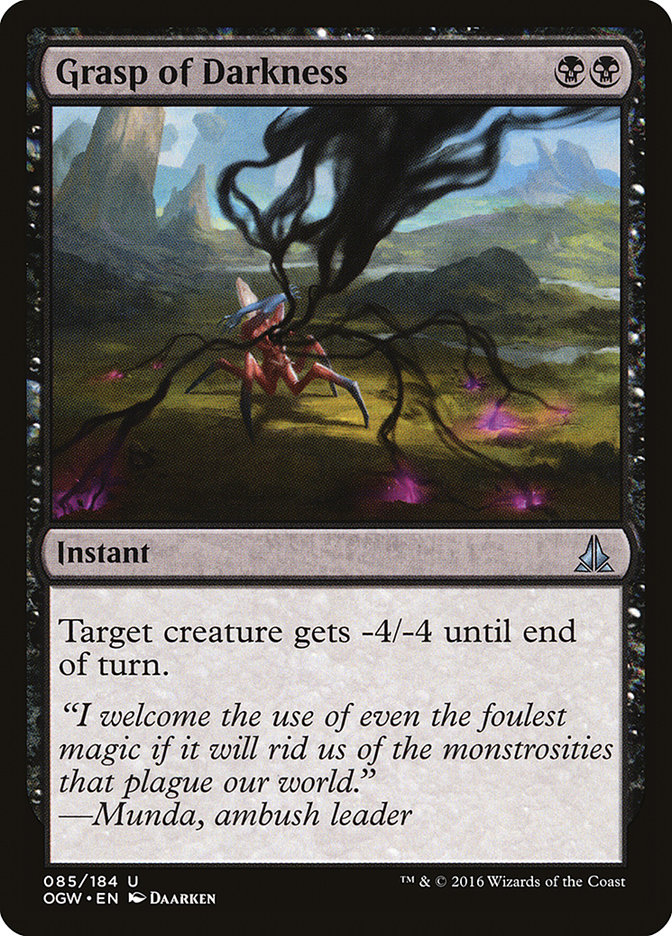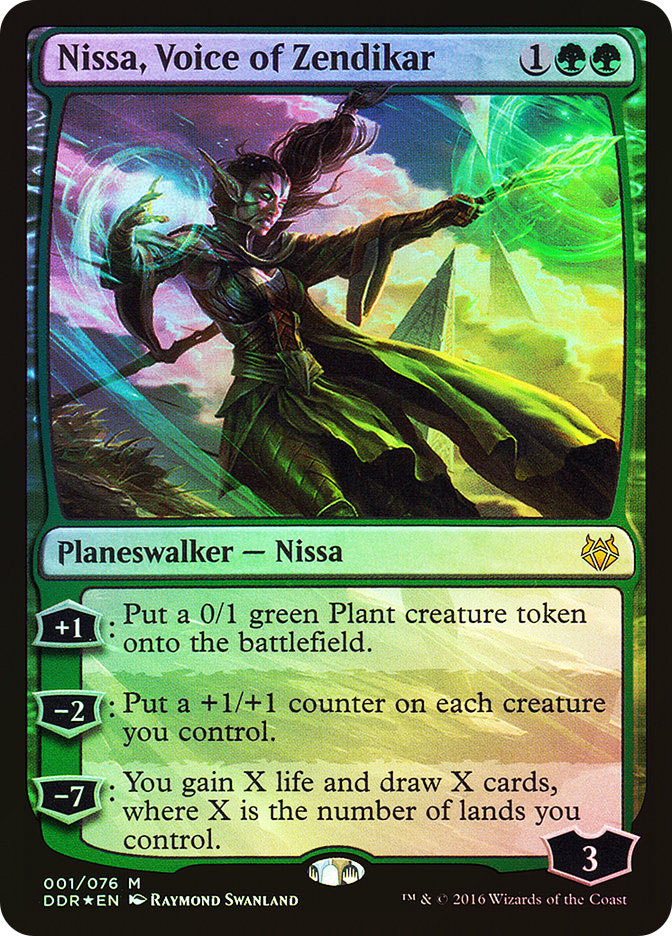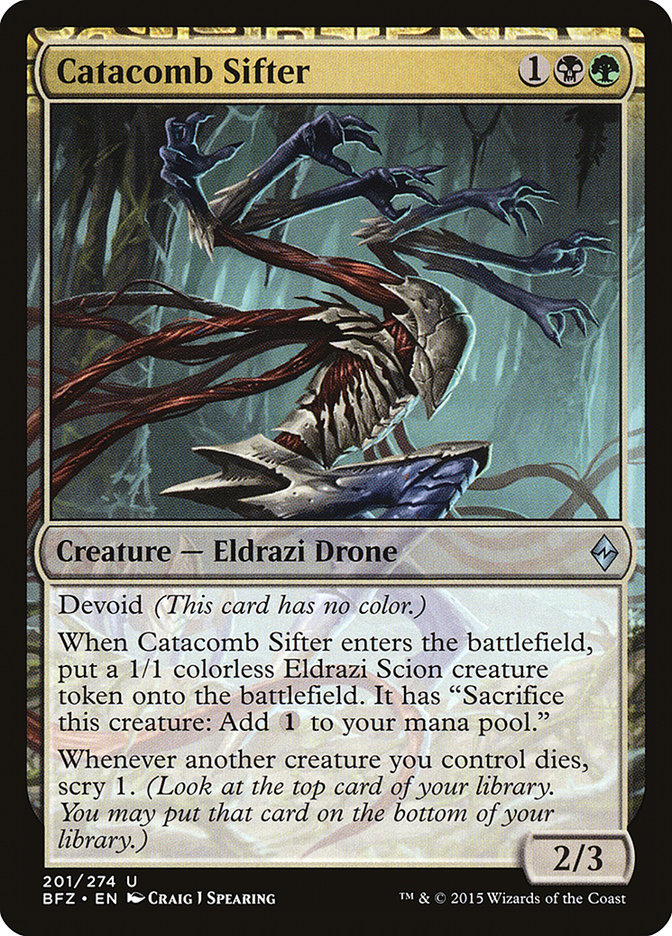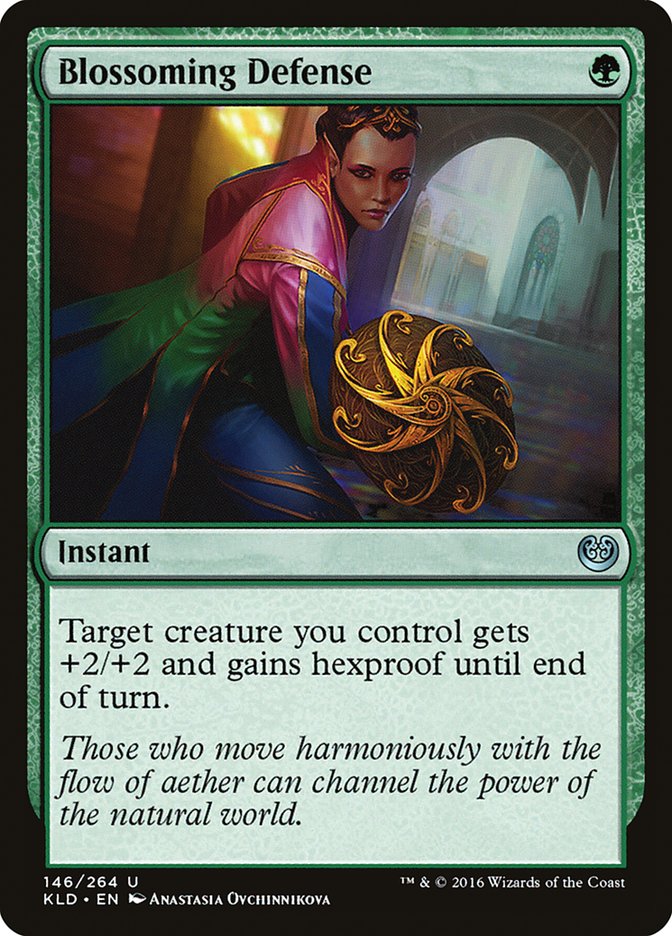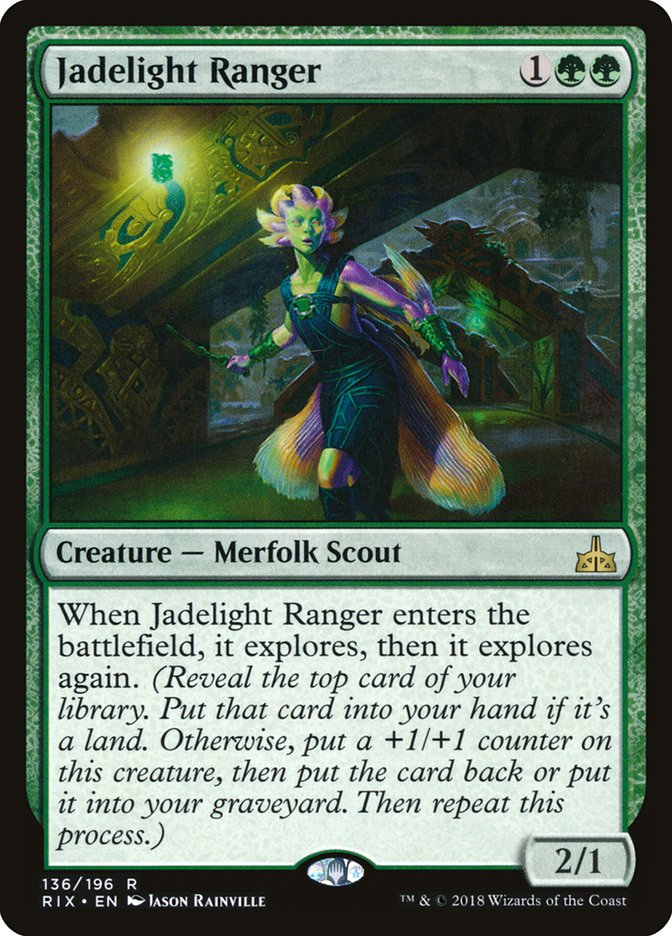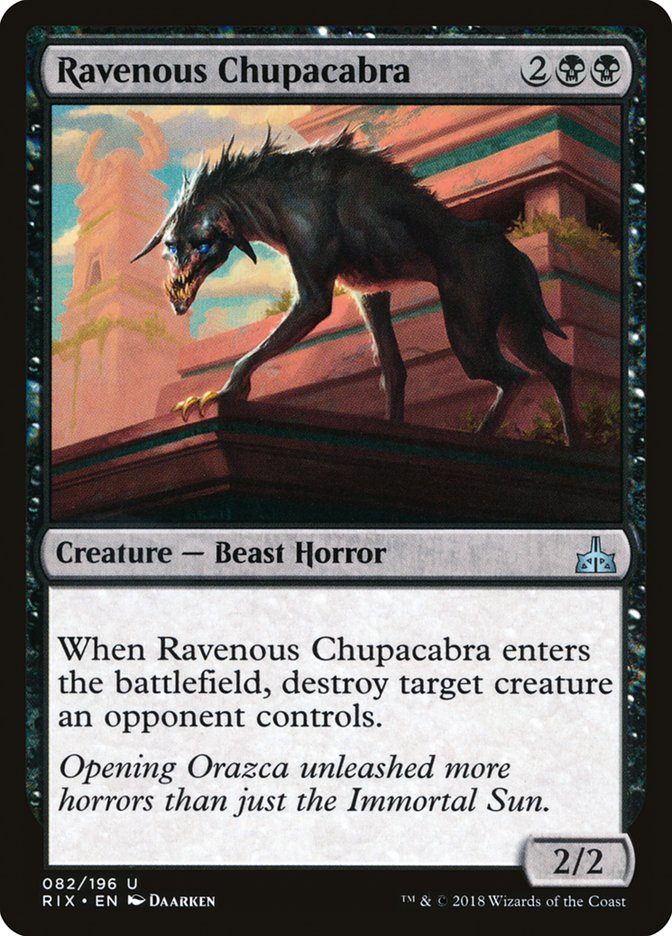“Every great story seems to begin with a snake.” – commonly attributed
to Nicolas Cage, origin unknown
I couldn’t agree more. Ever since the release of Aether Revolt,
every good tournament of mine has started by writing four copies of Winding
Constrictor down on the deck registration sheet. Or at least, that’s how it
feels. If I sit down and think about it, I can remember tournaments in that
time period where I put up respectable finishes without the aid of my
favorite Snake. They just weren’t as much fun.
As you might imagine, this means that I haven’t exactly been thrilled by
the recent state of Standard. Temur Energy was a cool deck and all, but it
sure didn’t play Winding Constrictor. Yes, you could play Sultai
Energy if you wanted to cling to Winding Constrictor, but for most of Ixalan Standard that deck was anywhere from substantially to
slightly behind Temur Energy. Further, it always did feel more like a
Blossoming Defense deck than a Winding Constrictor deck and was never able
to make me feel quite as alive as good old B/G Constrictor did.
But now, things are different. Rivals of Ixalan is about to be
Standard legal. Attune with Aether is banned. Rogue Refiner is banned. So
are Ramanup Ruins and Rampaging Ferocidon, but those are less important to
the positioning of Winding Constrictor. Is it time for Winding Constrictor
to make its presence known once more?
Before addressing that question, let’s back up and talk a little more about
the difference between old-school B/G Constrictor and the Ixalan
-era Sultai Constrictor Energy decks.
“The man who has once been bitten by the snake fears every piece of
rope.” – Chinese proverb
The defining characteristic of Winding Constrictor decks since their
inception has been very scary threats. Winding Constrictor dials up the
rate on nearly every creature in the deck, to the point where the
Constrictor player is getting way too much bang for their buck in games
where the Snake lives. Players caught onto this fact quickly, and started
killing Winding Constrictor on sight.
B/G Constrictor dealt with this by accepting the reality that its creatures
would die. The accepted play pattern became leading with non-Constrictor
threats, always threatening to land the Constrictor and make powerful plays
the second the opponent let their shields drop for a turn. Longtusk Cub was
perfect for this, as it could very easily become a 6/6 when followed up by
a Winding Constrictor if left unopposed.
To beat this, opponents had to start treating nearly everything as
must-kill threats. If you left the Longtusk Cub alone, a later Snake would
punish you. If you ignored Walking Ballista, they could go Winding
Constrictor plus Rishkar, Peema Renegade or simply Verdurous Gearhulk and
make you sorry.
Snake players played into this by including ancillary threats that were
also very important to kill, despite not being directly synergistic with
+1/+1 counters. Glint-Sleeve Siphoner, for instance, was a very dangerous
card to ignore. Simply put, B/G Constrictor sought to play as many
must-answer threats as possible, let the opponent kill what they wanted,
and then put together a win with the leftovers.
Put that way, the B/G Constrictor’s game plan sounds great. Why wouldn’t
you adopt such a plan? The downside is what, playing creatures that are so
good they have to be killed?
Well, the danger in the B/G Constrictor plan was falling too far behind.
Some of its cards weren’t inherently threatening on their own,
only in combination with the deck’s plethora of synergies. If the
Constrictor deck let its opponent trade one-for-one too aggressively, it
wouldn’t have enough cards left over to be threatening. A solitary Snake is
no threat, after all. So Constrictor pilots had to routinely hold their
cheap threats until later in the game and set up to deploy them together to
ensure that they got to benefit from their synergy.
Holding threats is all well and good until you fall so far behind on the
battlefield that no amount of synergy can get you back in the game. Turns 3
and 4 were critical here, turns where something had to be done, but you
didn’t quite have enough mana to push your synergies through open removal
mana. B/G Constrictor was so powerful because it had solutions to this
problem.
The first of these solutions was access to quality, powerful removal that
could be effectively used in this turn window. The loss of Grasp of
Darkness hurt the B/G Constrictor deck more than I had anticipated. The
ability to hinder your opponent’s development in the turns you were taking
off ensured a close to level playing field when you reached the stage of
the game where your synergies could come online safely.
Grasp of Darkness on its own wouldn’t have been enough to bridge that gap
from turns 2-5. The true strength of the Constrictor deck was its access to
turn 3 and 4 plays that played into your synergy while either being
difficult to kill or providing value even when they immediately died. These
were plays that B/G Constrictor didn’t have to hold to make the best use
of, plays that could be deployed on an empty battlefield into open mana
without fear.
Nissa, Voice of Zendikar was extremely good at protecting herself and could
be relied on to survive a turn or two and live to deploy an abundance of
counters on your team. Some of the most powerful starts the deck had access
to were turn 3 Nissa into turn 4 Constrictor + two-drop followed up by a -2
from Nissa. Tireless Tracker gave you a Clue to keep up the number of
resources you had access to, and Catacomb Sifter left behind a Scion for
your Verdurous Gearhulk or Rishkar, Peema Renegade. These cards are what
allowed B/G Constrictor to be conservative with its synergy pieces while
staying in the game.
And then they all rotated and left no suitable replacement in their wake.
In Ixalan Standard, there simply weren’t cards with the same
functionality at those mana costs. Rogue Refiner was as close as we came,
but that card wasn’t threatening enough once on the battlefield to distract
from your synergies, didn’t aid your synergies in any meaningful way, and a
single four-of in your deck wasn’t enough to consistently bridge that gap
anyway.
“Method is more important than strength, when you wish to control your
enemies. By dropping golden beads near a snake, a crow once managed to
have a passer-by kill the snake for the beads.” – Henry Wadsworth
Longfellow
Sultai Energy couldn’t take the B/G Constrictor approach of holding onto
its threats, so it didn’t try to. Instead of seeking to hold its power
plays until a time when they would be more robust, it looked to exploit the
opposition’s need to destroy them in a different way.
Instead of casting a removal-resistant threat on turn 3 and 4, Sultai
Energy sought to back up its synergy-laden threat with a copy of Blossoming
Defense. Just like with B/G Constrictor, leaving the Sultai Energy threats
on the battlefield was a dangerous proposition. Opponents were still forced
to try and deal with them and forced to play right into Blossoming Defense.
And then when they did manage to overload the Blossoming Defense and deal
with the threats you presented, you were able to hit them with a Hostage
Taker, either with Blossoming Defense backup or after they had used all of
their removal. The Sultai Energy deck attacked from a lot of angles and had
to, as it couldn’t play the same patient waiting game that B/G Constrictor
could.
In a lot of ways, Sultai Energy was forced to play a tempo game. Keep your
battlefield intact and the opposition off-balance with a Blossoming Defense
just long enough to force through a play that puts you significantly ahead.
This strategy worked, but it was also a lot more finicky than the original
B/G Constrictor deck. Things had to line up in a certain way, and as a
result the deck was much less centered around Winding Constrictor
strategies.
Still, for a time it was the best Winding Constrictor strategy we had
access to. But times have changed.
“There’s a snake lurking in the grass.” – Virgil
Alright, that was a lot of history, but I hope you’ve stuck with me. The
point of all of that backstory was to make the case that true Constrictor
decks weren’t pushed out of the metagame by the dominance of Temur Energy
but simply lacked the tools they had pre-Ixalan.
Temur Energy also existed before Ixalan, in much the same form as
it did in the Ixalan era. Before Ixalan, B/G Constrictor
was simply the better deck. Rotation took a very specific, very niche class
of cards away from the B/G Constrictor deck, cards whose importance was
subtle and easy to miss. Because these cards weren’t direct Constrictor
synergies, it would be easy to think that the reason Constrictor was bad in Ixalan Standard was simply that the Constrictor synergies weren’t
powerful enough anymore. But that’s not the case.
As you might have guessed, I’m excited about Winding Constrictor once more
in Rivals of Ixalan Standard. And the reason has nothing to do
with the banning of Attune with Aether or Rogue Refiner. No, I have my eyes
on some powerful Rivals cards that finally fill that hole left by
Nissa and friends.
First and foremost among them: Jadelight Ranger. Now, I’ll admit to some
bias as here, as I have a fierce and undying love for every Magic card with
Jade in its name. All ten of them. I’ve even gotten to
sign
most of them. Just something magical about cards that share your name.
So yes, nothing would make me happier than registering Jadelight Ranger in
a competitive tournament and being convinced that I was correct to do so.
But that last part is key, and I wouldn’t trick myself into it. But
Jadelight Ranger fills the exact role vacated by Tireless Tracker
et al. In fact, there’s a strong case that Jadelight Ranger fills that role better than Tireless Tracker ever did.
Like most things in Magic, it all comes down to mana. Despite both cards
costing three mana, Jadelight Ranger can be deployed a full turn earlier
than Tracker, as getting that first Clue is vital to Tracker’s power. This
is huge, as filling that turn 3 gap is something we really want to do.
Tracker’s synergy with Winding Constrictor is more powerful than
Jadelight’s, but it’s also much more mana intensive and as a result, takes
longer to come online. Turn 5 Winding Constrictor plus Jadelight is a much
scarier play than Constrictor plus Tracker, or than Tracker crack Clue.
I view this card as the closest thing to a Nissa, Voice of Zendikar
replacement that Standard Constrictor decks are ever going to see. It fills
that same role of an early play that threatens synergy while being hard to
interact with. Once on the battlefield, the opponent has to play deathly
scared of you casting a Winding Constrictor on any subsequent turn.
Further, Hadana’s Climb has the same kind of abrupt “corner turning”
ability that Nissa did, an ability that is highly prized in midrange
strategies like this. For more on how I view games with Climb playing out,
check out my
article
from last week.
I overlooked this card for Constrictor decks at first as preview season
rolled on, and that was a mistake. Again, the value Ravenous Chupacabra
adds to the Constrictor strategy is the ability to fill that awkward turn 3
and 4 gap in your plays. Removing a creature slows them down long enough
for your synergies to be safely deployed, and leaving a body behind is a
huge boon to your synergies. Being a home for counters from Hadana’s Climb,
Rishkar, Peema Renegade and Verdurous Gearhulk might not seem like a huge
deal, but it really is. Every extra body you have alongside Winding
Constrictor plus Verdurous Gearhulk is an extra counter, and that can
really add up.
Given all of that, here’s how I envision Constrictor decks looking in Rivals of Ixalan Standard.
Creatures (29)
- 4 Verdurous Gearhulk
- 4 Servant of the Conduit
- 4 Winding Constrictor
- 2 Rishkar, Peema Renegade
- 4 Glint-Sleeve Siphoner
- 4 Walking Ballista
- 4 Jadelight Ranger
- 3 Ravenous Chupacabra
Lands (24)
Spells (7)

“Have you ever held a snake? They are so strong. You can see why there
are so many myths about them: they are unlike any other creature. It’s
extraordinary how that little brain can keep everything moving in
different directions.” – Michelle Paver
After identifying the cards we wanted to play to fill the holes from
previous incarnations of B/G Constrictor, most of this deck construction
was a breeze. Most of the challenge after that was in figuring out how to
make the manabase functional yet not too prone to flooding despite not
having access to Attune with Aether.
We want to play Glint-Sleeve Siphoner, as the card has historically proven
itself to be a great complement to Winding Constrictor when Walking
Ballista isn’t seeing much play; and unlike Longtusk Cub, Siphoner doesn’t
rely on Attune with Aether to start being powerful. Further, we can’t
altogether abandon the energy subtheme as we need the Aether Hub to help
out our blue splash. Given that, we likely need to play Servant of the
Conduit to give us access to a little more energy and, as a bonus, color
fixing. Besides, sixteen two-mana plays has always been the sweet spot for
Constrictor decks, and as mentioned previously, Longtusk Cub doesn’t look
too appealing right now.
But playing Servant of the Conduit increases our risk of flooding. To
combat this, the decklist features three deserts, skewing more heavily
towards Hashep Oasis due to the game-ending potential of using Hashep Oasis
and Winged Temple of Orazca on the same creature. I’ve also included the
full playset of Fetid Pools, a land that is particularly appealing in its
ability to turn lategame Jadelight Rangers into actual card draw.
The most questionable inclusion in the list is the single basic Island.
Without Attune with Aether or Evolving Wilds, we don’t need to
have a basic Island at all, but I’ve included it under the assumption that
Settle the Wreckage will be popular moving forward. One of the big draws to
including blue is being able to have counter magic out of the sideboard,
which we would like to be able to cast against the Settle the Wreckage
decks. Having that basic Island means it’s very hard to be stranded with
Negates you can never cast against white-based control decks.
There’s sideboard work to be done, obviously. I’m positive you want access
to a large number of Duress and Negate, but it could conceivably be less
than four each. The rest of the sideboard will be determined by where the
metagame settles, but for week one I’d be particularly interested in
graveyard or artifact hate to deal with God-Pharaoh’s Gift decks and copies
of The Scarab God and Hostage Taker to fight midrange mirrors with.
I’ve been missing Winding Constrictor for a long time, but I think my
months of pining might finally be over.


